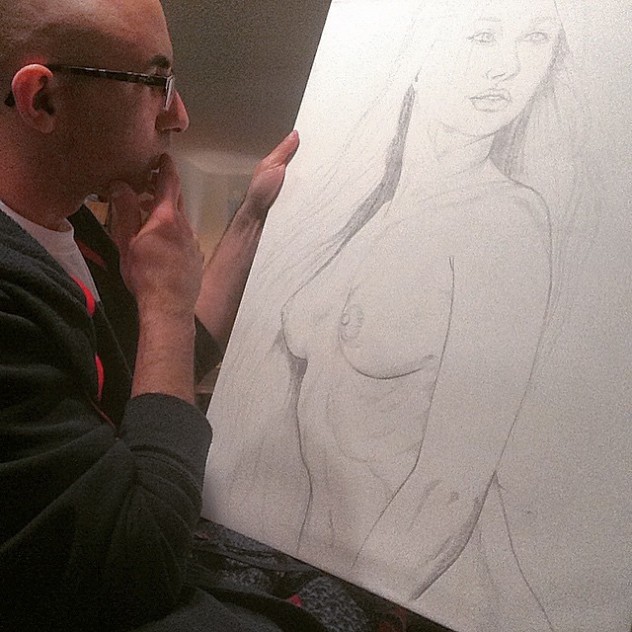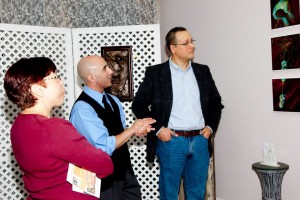New Painting in Progress
 I thought that it would take me longer to decide when to begin a new project. After drawing a large sketch on a canvas I decided to begin a painting. Since it is Monday and this is my studio day, it is only logical to step away for the computer. Friday was a long day in front of it taking care of business. Art business is so much more than just painting or sculpting, specially when I take care myself of the changes to the website, the design of posters, cards, and other graphic design for marketing, not to mention writing for the blog. No, I don’t have an agent or a PR service to promote what I do. I’ve been blessed with awesome supporters who by word of mouth let their friends know about the parties, the art, and other events. Also, social media plays a very important role in the process. I am very thankful for all the followers.
I thought that it would take me longer to decide when to begin a new project. After drawing a large sketch on a canvas I decided to begin a painting. Since it is Monday and this is my studio day, it is only logical to step away for the computer. Friday was a long day in front of it taking care of business. Art business is so much more than just painting or sculpting, specially when I take care myself of the changes to the website, the design of posters, cards, and other graphic design for marketing, not to mention writing for the blog. No, I don’t have an agent or a PR service to promote what I do. I’ve been blessed with awesome supporters who by word of mouth let their friends know about the parties, the art, and other events. Also, social media plays a very important role in the process. I am very thankful for all the followers.
I am considering several ways to approach the new painting in progress. I could use the same style and technique I used in my published painting which is very similar to the ink drawing you have probably seen through Facebook and Instagram. You can also see the paintings here in the website. I could approach the painting with not so strong lines and make the acrylic paint look like watercolors and keep the pencil lines showing, or just lines on a solid background as some of the torso paintings. Perhaps I could use the technique I used in my most recent painting. I guess that being a sculptor and not a painter allows for some experimentation. I’ll be posting updates on social media as I go. Make sure to follow and let me know what you think.

 I honestly enjoy talking about my art, the process, the technique, the historical influences, and the possible story behind each piece. I believe that being able to explain your art is very important and increases credibility as an artist. I guess it applies to any craft. A while ago I posted something about this subject
I honestly enjoy talking about my art, the process, the technique, the historical influences, and the possible story behind each piece. I believe that being able to explain your art is very important and increases credibility as an artist. I guess it applies to any craft. A while ago I posted something about this subject
The Discipline in The Discipline
Discipline is an interesting word. It describes a specialization within a field of practice. Think of physicians. Each of them specializes in specific conditions and treatments. Yes, they have to go through understanding pathophysiology or how diseases affect the natural functions of the human body. However, specializations allow them to understand specific functions related to specific parts of the body.
Then you have the discipline in the discipline. In every field of practice and every specialization within a field people have to continue working, practicing, sacrificing time, exercising, studying, and giving their all to maintain and improve the skills and abilities. When they thought they reached their degree or maximum capacity of their skills it is just the beginning. There is always something new to learn, there is always something that could be improved.
As aforementioned, discipline requires to practice certain activities. How does this look like for an artist? What exercises help artists get better at what they do? I would like to mention a few from my personal experience. Feel free to share some of your own. These are in no specific order and they don’t happen altogether in one day.
I could go on and on, but it would be great to hear about your practices.